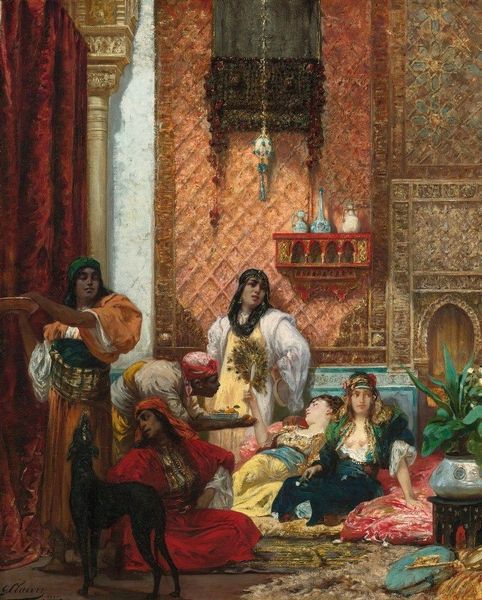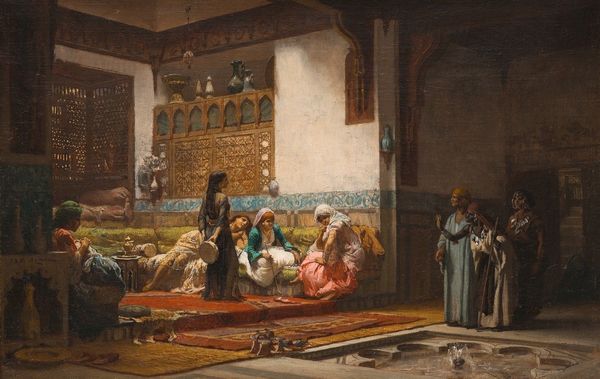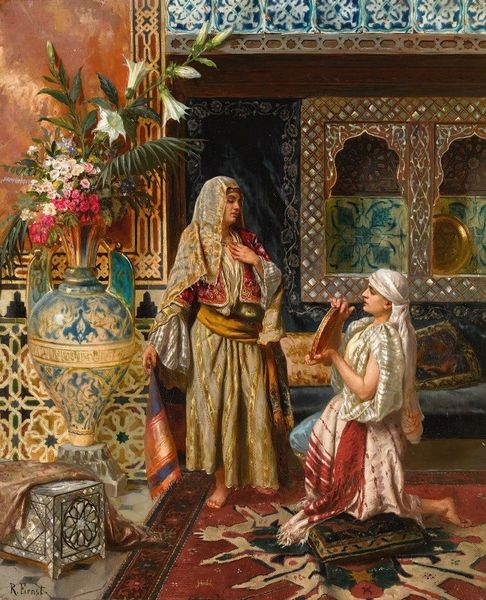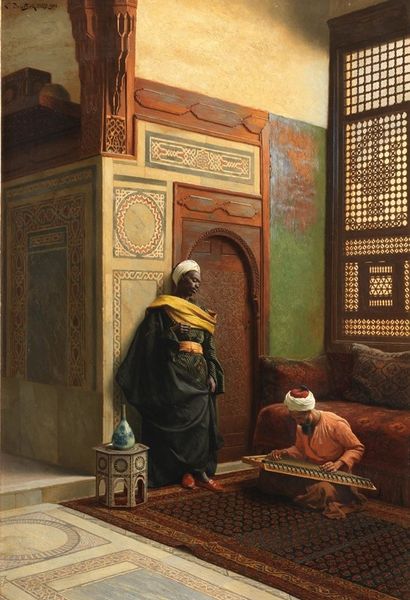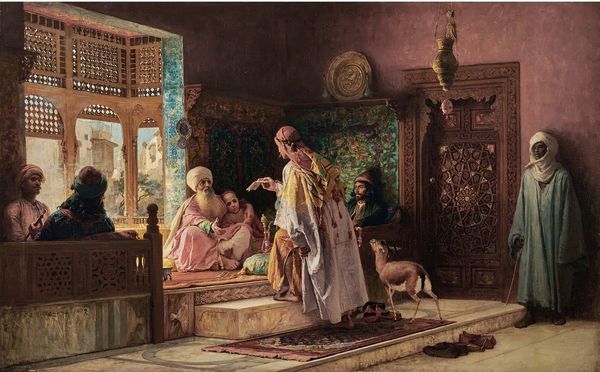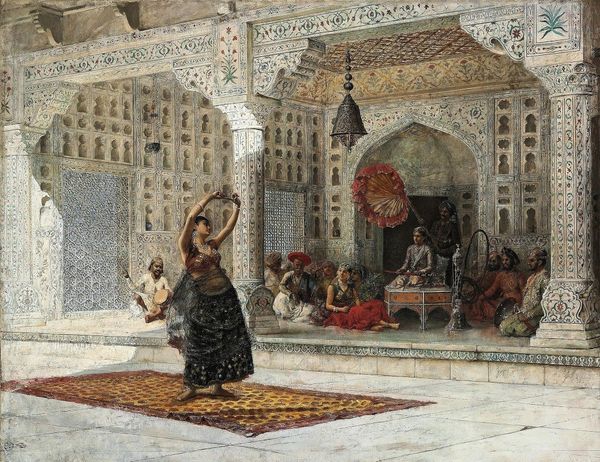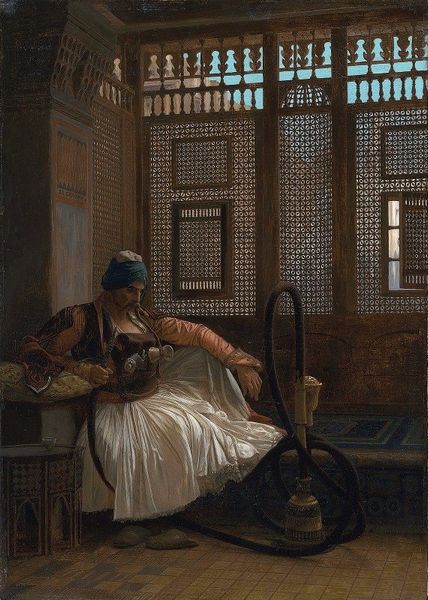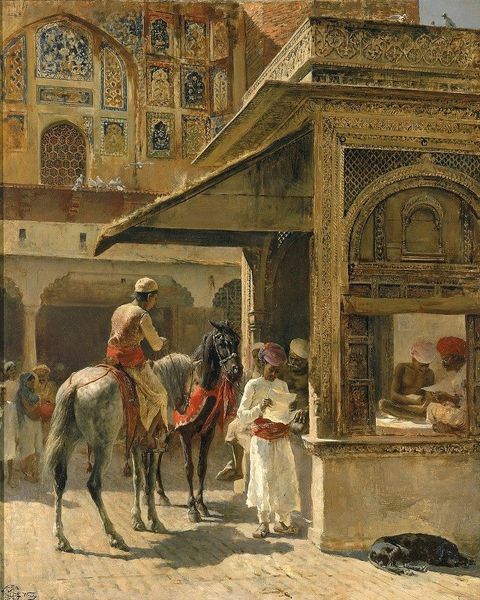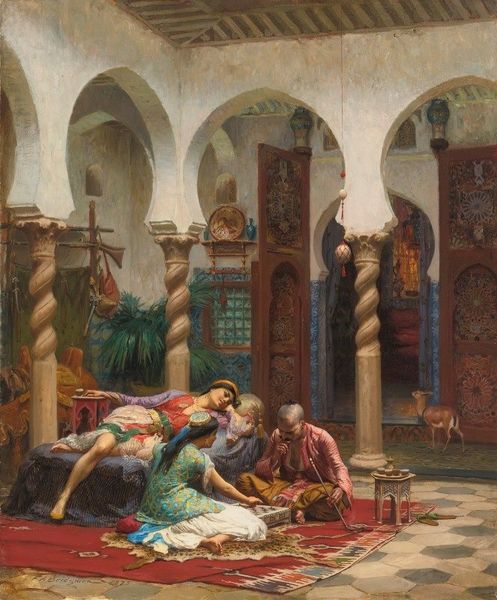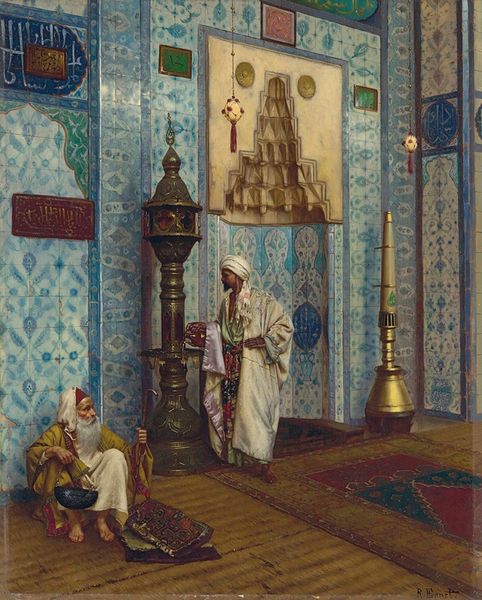
painting, oil-paint
#
portrait
#
painting
#
oil-paint
#
orientalism
#
genre-painting
#
academic-art
Copyright: Public domain
Curator: Here we have Jean-Joseph-Benjamin Constant’s oil on canvas painting "Dans Le Palais Du Sultan." Editor: It feels so…staged. The light is theatrical, almost like a tableau vivant. All that ornamentation pressing down feels heavy. Curator: Exactly. It reflects a prevalent mode of Orientalist art, very much an academic genre painting. The focus here is less about realism and more about constructing a fantasy, fueled by Western imagination of the "exotic" East. Editor: You see it as fantasy; I see it as misrepresentation bordering on appropriation. What are the power dynamics at play here? Who gets to gaze, and who is being gazed upon? Curator: Precisely, and that’s what we should be discussing! Consider the staging: The architecture is almost fetishized with so much detail in contrast to the figures who seem posed, like mannequins. The men in white seem absorbed in some activity while the rest just stand. Editor: There’s no narrative tension, no lived experience represented. It’s an assemblage of stereotypes for the Western gaze to consume, reinforcing orientalist tropes of languid luxury and mysterious sultans. And there's an assumed male presence. It gives the male audience an invitation to imagine themselves there, in a position of power. Curator: The title, “In the Sultan’s Palace,” only solidifies this voyeuristic tendency. We’re being invited to peer into an imagined world. And of course, there's been much scholarship questioning whose fantasies were really being indulged through this image-making process. Editor: For a modern viewer, it becomes a starting point for understanding not the “Orient” itself, but how Western culture constructed and consumed the Orient, shaping policies and perceptions for centuries to come. The painting is very good at capturing those biases! Curator: Indeed. Approaching it this way helps unpack layers of social, political, and cultural significance. It pushes us to engage with this kind of work in ways that confront the narratives it upholds. Editor: The role of institutions in validating these representations is a factor too! By continuing to exhibit works such as this, we commit to re-examining their role within society, in art history, and as instigators of dialogues regarding ethics and historical legacies.
Comments
No comments
Be the first to comment and join the conversation on the ultimate creative platform.


